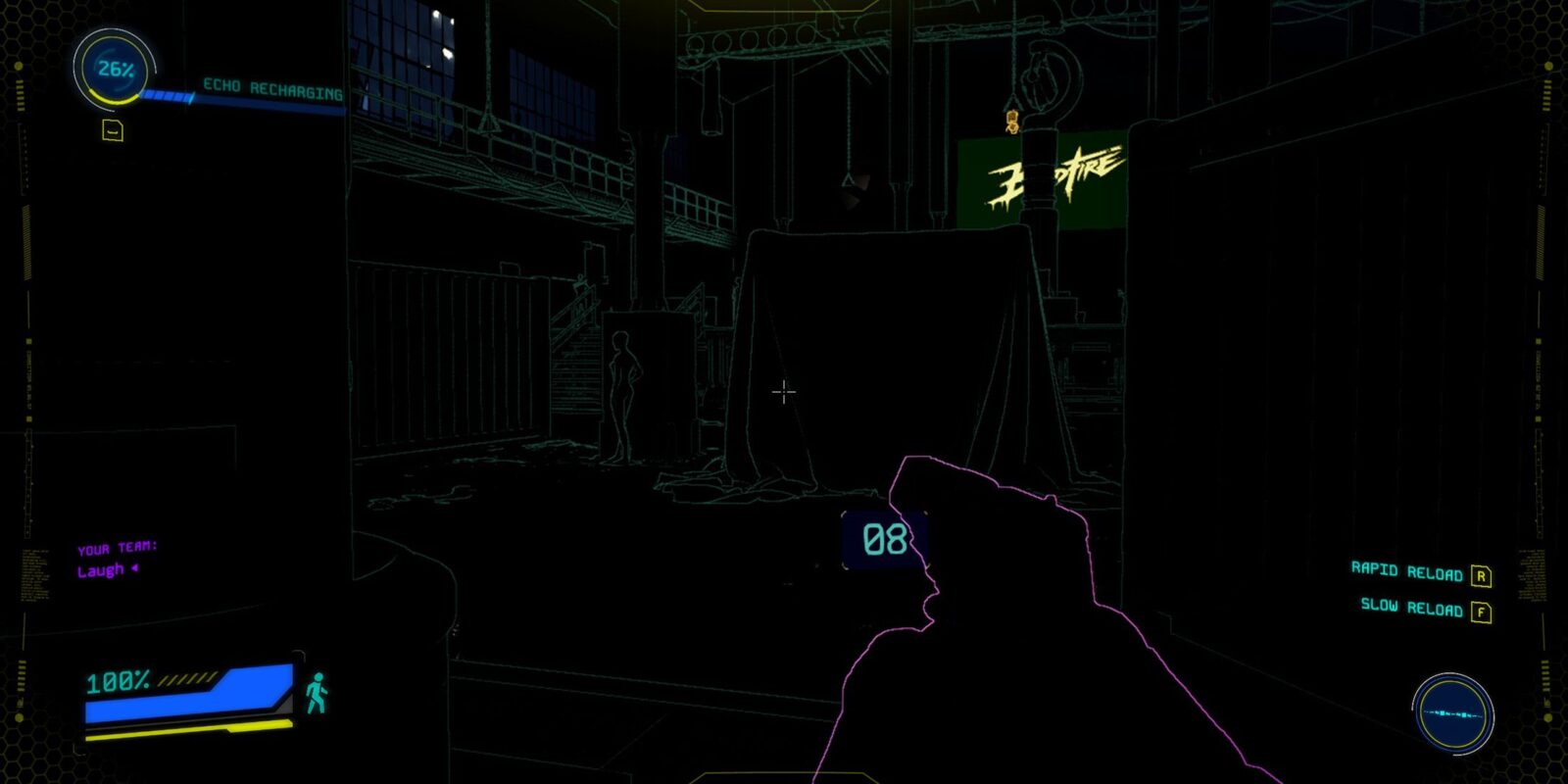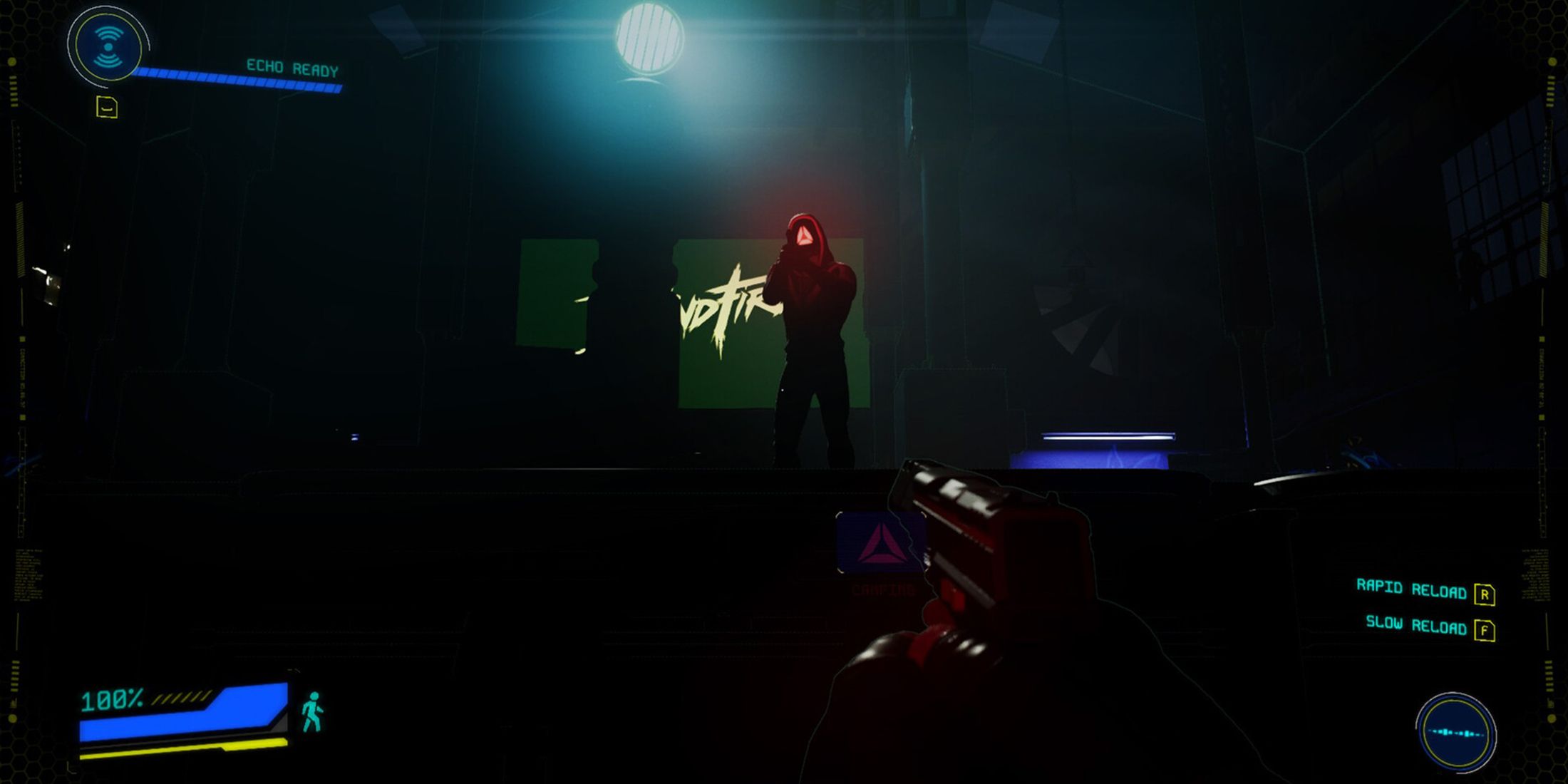Double Eleven’s Blindfire asks a question few if any first-person shooters have dared: what happens when players can’t see each other or the environment? The answer is a surprisingly tense, strategic first-person shooter that tests players’ senses and spatial awareness to an unprecedented degree. Rather than a contest of twitch reflexes and snappy aiming, success in Blindfire is all about listening, waiting, watching, and choosing the right moment to strike.
Game Rant sat down with Blindfire lead designer Matt Dunthorne to explore how darkness influences the game’s fundamental approaches to combat, level design, and balance. Naturally, it’s a challenging idea to implement, but Dunthorne believes the emphasis on darkness has led to a unique approach to these factors. Blindfire‘s levels are simply built differently, and the darkness makes the game accessible to a wider competitive audience–and potentially even blind gamers.
1:49

Related
Blindfire – PlayStation Release Trailer
Double Eleven’s FPS action game Blindfire is available now in Early Access on PlayStation 5. Take a look at the PlayStation release trailer here.
Blindfire’s Darkness Allows For Unique Level Design
Dunthorne offered several examples of how Blindfire‘s twist influenced level design, particularly when it comes to spawn points and even anti-camping measures. Since anywhere that’s dark is effectively a safe space, dedicated spawn points are no longer necessary. Players can begin the match virtually anywhere that’s dark, and this makes each round less predictable than a game like Call of Duty where players begin a round by lobbing a grenade at a known spawn point.
“When you remove light from the equation, everything can be a lot more compact and closer together. One of my favorite things to watch during playtests is the spectator mode. You can see the entire map with the lights on, and I love it when two players walk right past each other, completely unaware of each other. We love moments like that.”
To encourage those close encounters, we designed narrower sections in the map. Initially, though, we found that players would just head to a corner and stay there. So, we implemented an overtime mechanic—kind of like a battle royale. After a certain amount of time, the corners light up with UV lights, making anyone in those areas visible and vulnerable.”
The darkness also enables Blindfire to cleverly address camping: as time goes on, so do the lights. There’s nothing deadlier than light in Blindfire, and players are heavily discouraged from sticking around the walls lest they be revealed for all to see. Other first-person shooters would have to use much more contrived mechanics to discourage camping, while Blindfire‘s solution feels natural within the setting.
Blindfire’s Twist Makes It Accessible To A Broader Audience
Blindfire‘s pacing and moment-to-moment tactics also benefit from the darkness. Dunthorne pointed out that since opponents aren’t always visible, Blindfire isn’t a game about rushing headlong into firefights and scoring quick headshots. Instead, Blindfire promotes good timing, out-thinking opponents, and using one’s senses. This makes the game more accessible to players interested in multiplayer first-person shooters but who might be intimidated by the breakneck pace of the genre’s most popular titles.
“In
Blindfire
, I can out-think someone and get a result, rather than having to outshoot them directly. If I use my Echo well, if I know where people are, and if I can listen and use my other senses to gain an advantage or get the jump on someone, it means I can afford to miss a couple of shots.”
When it comes to accessibility, Blindfire is also making gains toward a historic achievement: a first-person shooter accessible to blind gamers. Double Eleven isn’t quite there yet, but Dunthorne says the team is working with accessibility experts on ways to refine elements of the game for blind accessibility. A game where players already can’t see much is a perfect foundation for this venture, and it’ll be exciting to see if Blindfire can manage to accommodate.















Leave a Reply